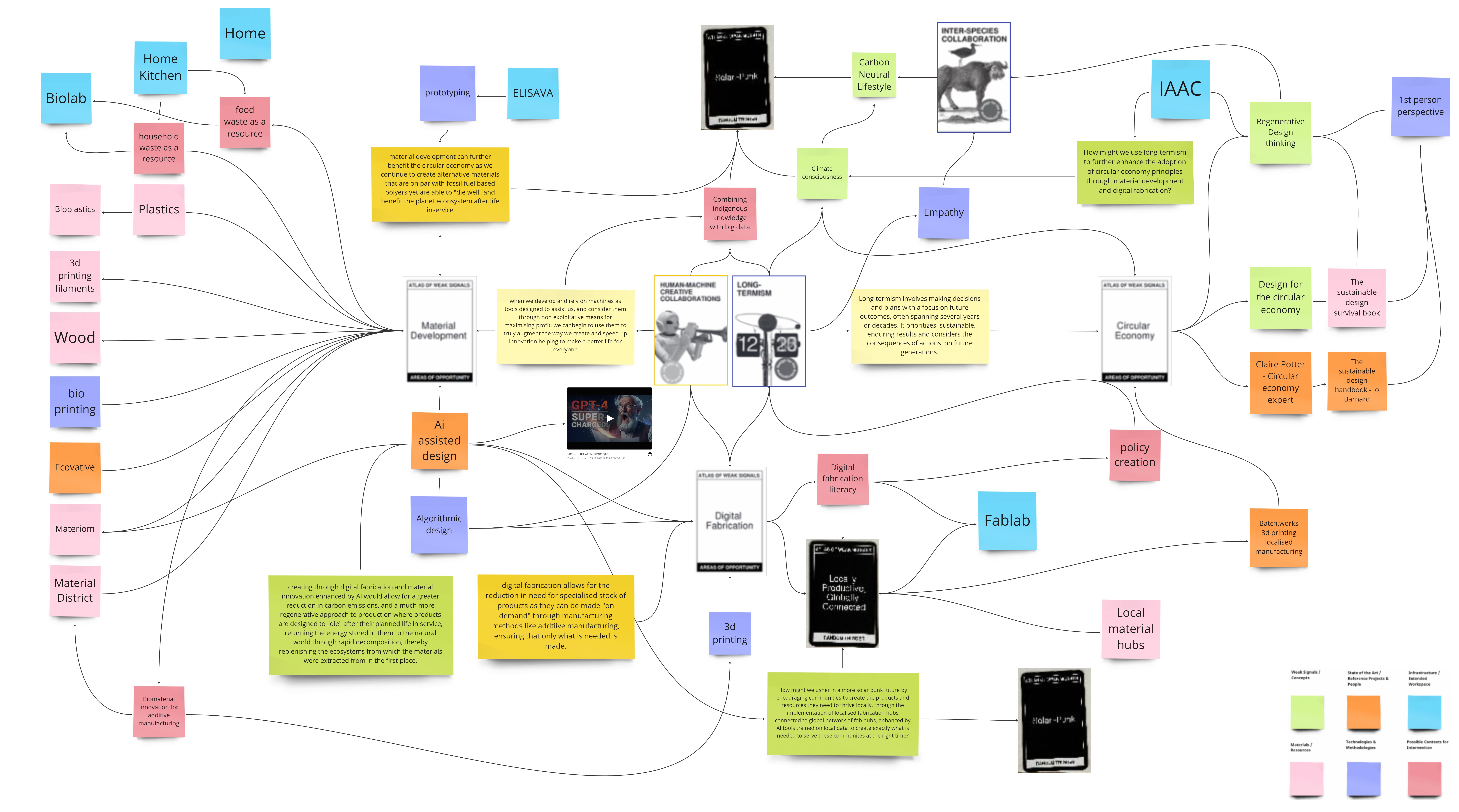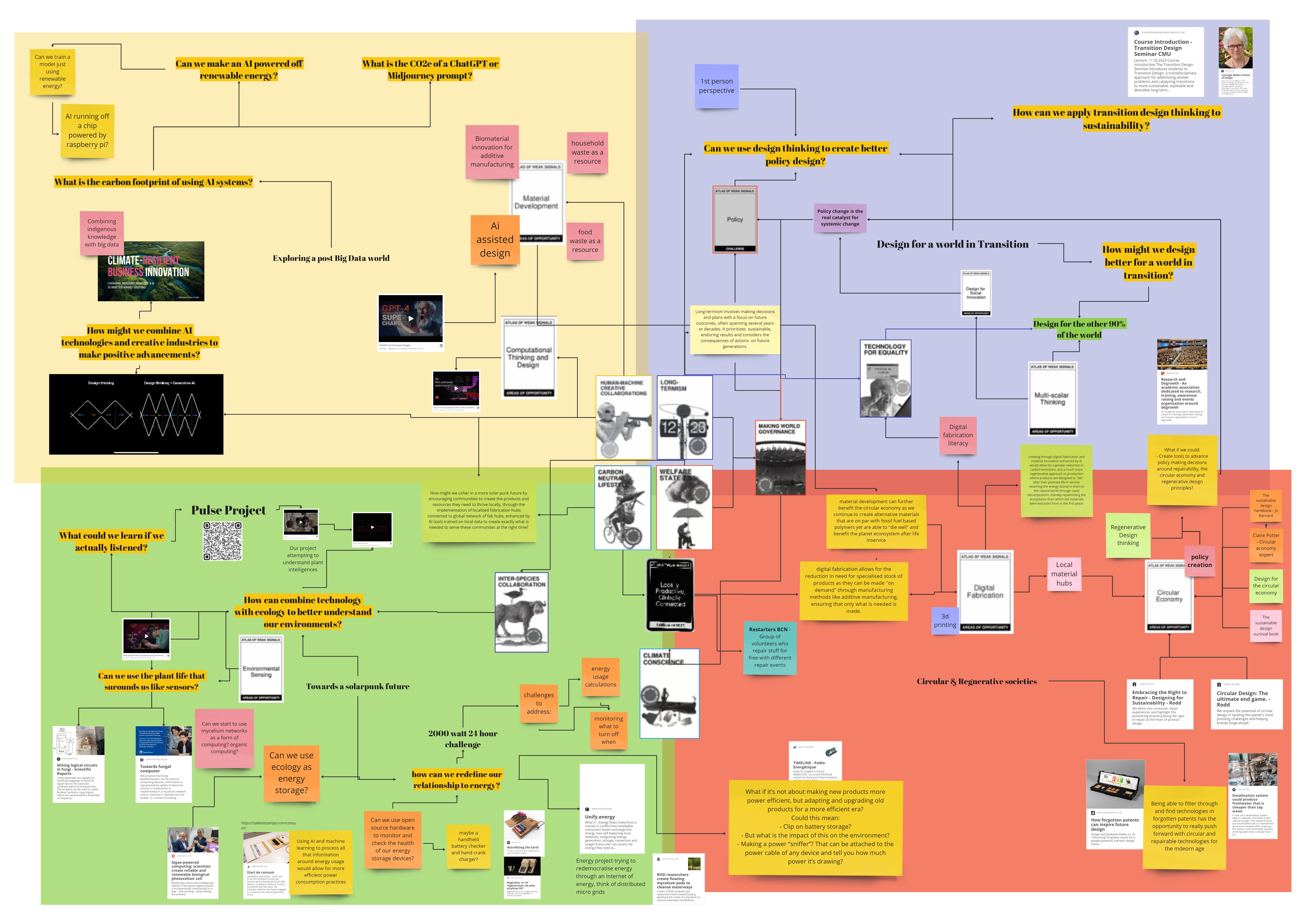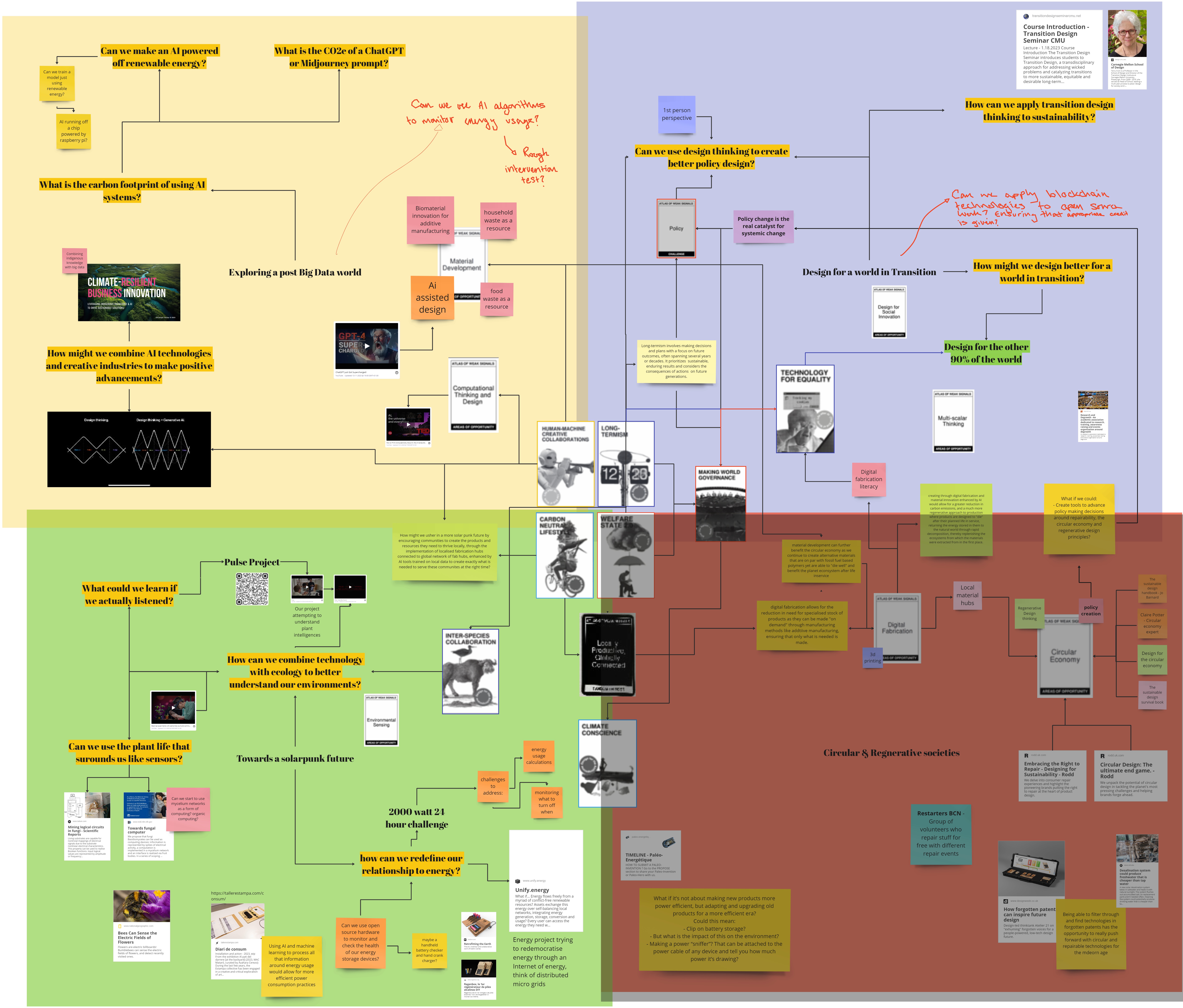Design Space
Drifting Spaces¶
Here you will find a series of snapshots of my design space as it has shifted and changed over the course of the year, as I’ve started to understand where my interests are drawn towards. I hope you find it an interesting look into my process! :D
Term 1 Design Space ~ My first map of all my interests¶
At the start of the year, my interest was deeply rooted in exploring the intersection of sustainability, innovation, and technology. I was curious about how climate consciousness could drive positive change, and my selection of content reflected this. The concept of long-termism particularly intrigued me, emphasizing the importance of making decisions with sustainable outcomes for future generations in mind. I found myself drawn to the idea of using digital fabrication and material development to promote circular economy principles. The potential of leveraging AI tools to accelerate innovation and create products designed to “die” after their planned life, thus replenishing the natural world through rapid decomposition, fascinated me. Additionally, I was captivated by the concept of localized fabrication hubs connected to a global network. This approach, combined with AI tools trained on local data, seemed to hold the promise of empowering communities to sustainably create the resources they needed. It painted an exciting vision of a solar punk future where communities could rely on their own ingenuity and technology to meet their needs. Throughout my exploration, I engaged with various resources and experts in the fields of circular economy and sustainable design. Books like “The Sustainable Design Handbook” and “The Sustainable Design Survival Book” provided valuable insights, while innovative companies like Batch.works and Ecovative, and educational institutions like ELISAVA and IAAC, were at the forefront of material innovation and digital fabrication. During this period, my focus was on finding creative solutions to environmental challenges through the integration of technology, sustainable design thinking, and community empowerment. I believed that combining these elements could pave the way for a more regenerative and environmentally conscious future.
Term 2 Design Space ~ Starting to refine my research interests¶
My interests evolved as I delved deeper into the fields of sustainability, renewable energy, AI, and design thinking. I began to explore how we could train AI models using renewable energy and understand the carbon footprint of AI systems. The idea of making AI powered by renewable energy sources became a central theme. I also focused on integrating indigenous knowledge with big data and applying transition design thinking to sustainability. Biomaterial innovation for additive manufacturing caught my attention, as did the concept of designing for a world in transition. The vision of a solar punk future, supported by localized fabrication hubs connected to a global network, continued to inspire me. Other themes that captured my interest included regenerative design thinking, the circular economy, and digital fabrication. I was particularly intrigued by redefining our relationship with energy and considering the impact of sustainable practices on future generations. These explorations encouraged me to think creatively and innovatively about how to implement sustainable practices.
Term 3 Design Space ~ A little bit of further detail and focus¶
As the year progressed, my research interests further narrowed. I continued to explore topics related to sustainability, renewable energy, design thinking, AI, circular economy, and regenerative design. I focused on exploring the potential of AI powered by renewable energy and examined the carbon footprint of AI systems in greater depth. My interest in biomaterial innovation and the use of household waste as a resource waned somewhat as I explored how we could develop AI for sustainability. I was also interested in the synergy between indigenous knowledge and big data, emphasizing the importance of long-termism and making decisions for future generations. But this too was eventually placed back on the shelf to be approached on a later date. The role of habit change and AI in reducing carbon emissions and promoting a circular economy became more prominent in my research. These explorations led me to my current research project, which focuses on energy consumption habits and consumption tracking. This project is the culmination of my evolving interests and reflects my commitment to finding innovative solutions for a sustainable future.


